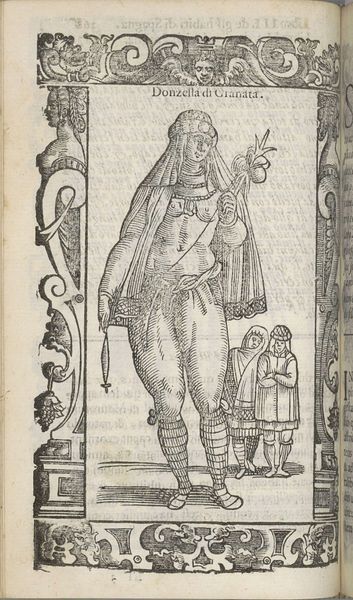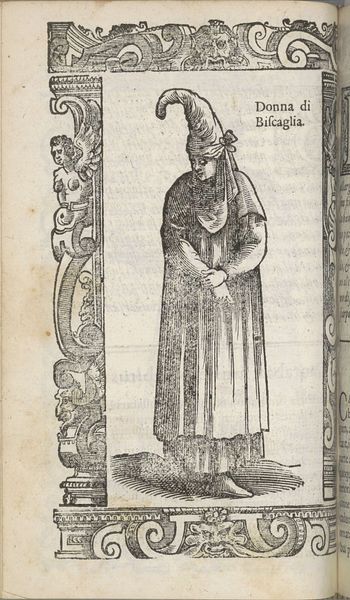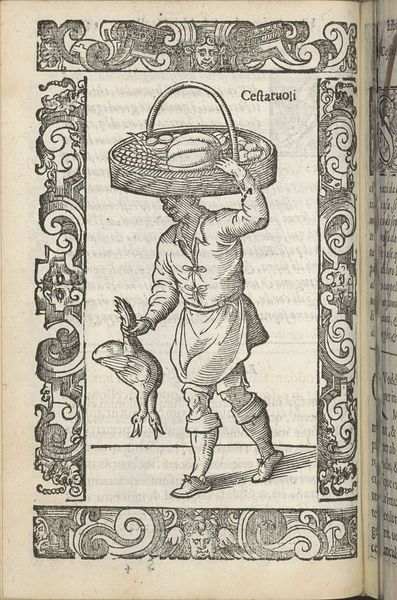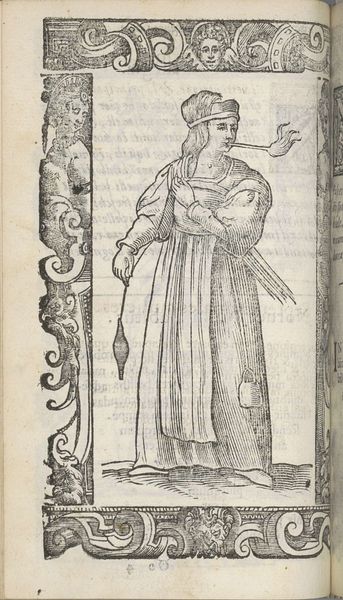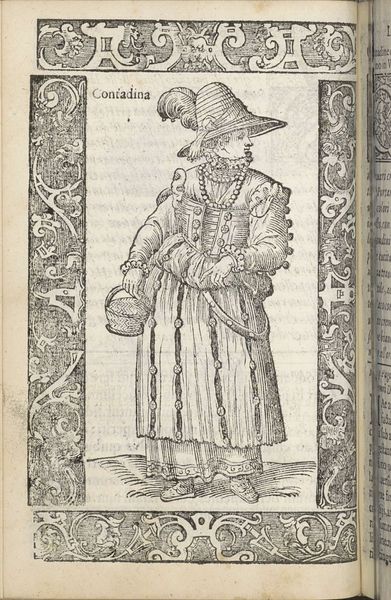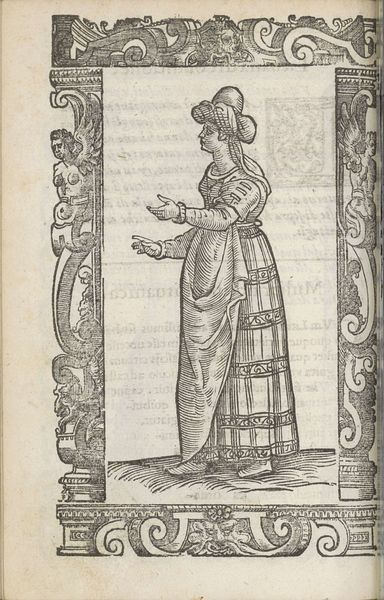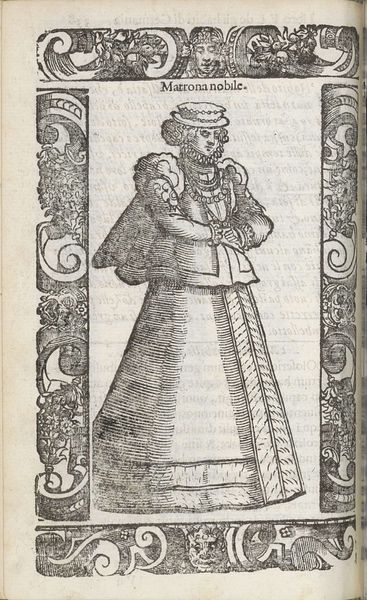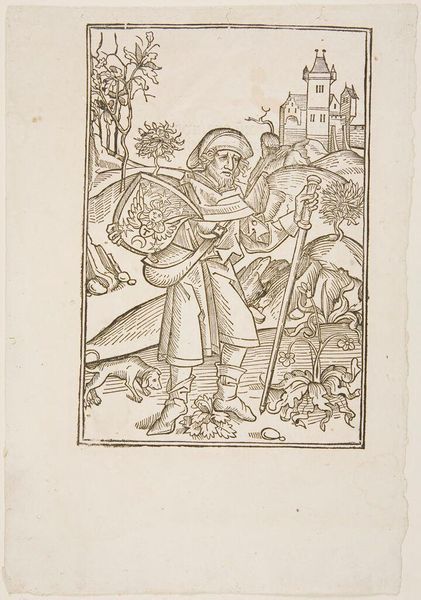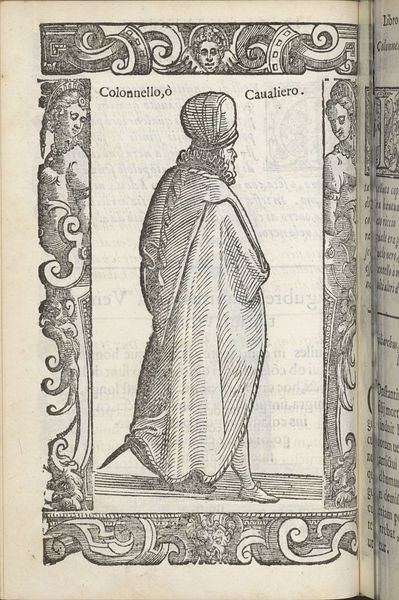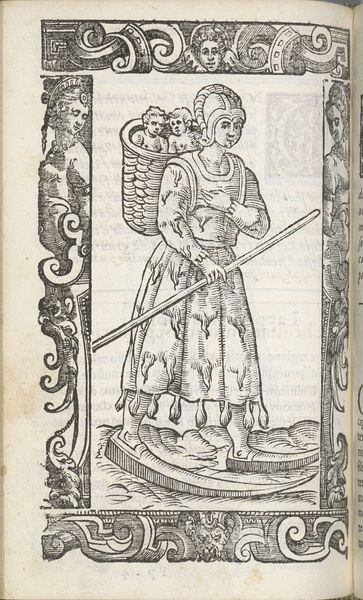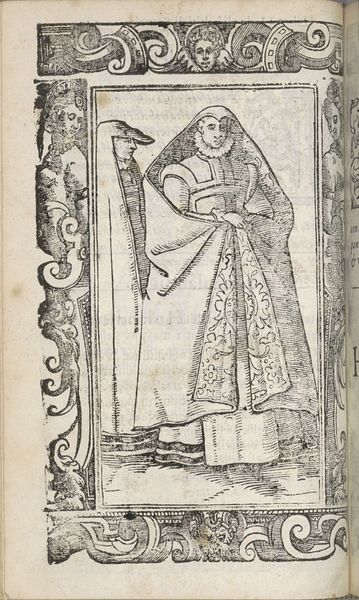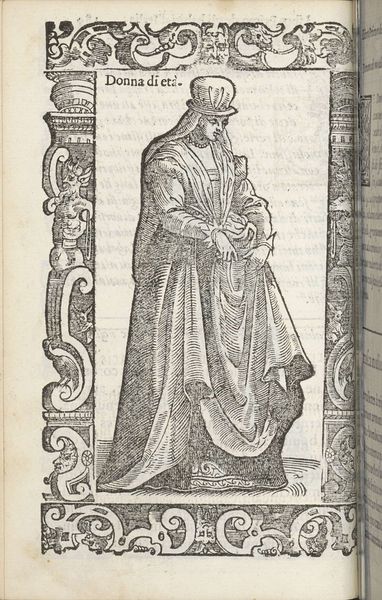
print, engraving
#
portrait
# print
#
11_renaissance
#
orientalism
#
genre-painting
#
history-painting
#
italian-renaissance
#
engraving
Dimensions: height 167 mm, width 125 mm
Copyright: Rijks Museum: Open Domain
Editor: Here we have Christoph Krieger's 1598 engraving, "Turco di grado in casa." It depicts a seated Turkish man in what appears to be his home. The detail is quite impressive, even though it is a print. What stands out to you about this piece? Curator: What strikes me is the framing of this individual. Consider the title - "Turk of Rank in House." This isn’t merely a portrait; it's a statement about status and, I argue, a Western European fascination—bordering on fetishization—with the ‘Orient’ and its perceived power structures. Look at the intricate border, mimicking Ottoman designs, literally boxing him in, turning him into a spectacle for a European audience. Editor: So, the border emphasizes a sort of "othering"? Curator: Precisely! How does this relate to contemporary conversations around cultural appropriation, orientalism and representation? Are we looking at a historical document or an act of objectification? How does this image contribute to the larger narrative of early modern Europe's relationship with the Ottoman Empire, particularly its power dynamics? Notice also that someone is serving him food and drinks. It's clear he's privileged. Editor: I hadn't considered that perspective. It really makes you question the intention behind the piece. Curator: These prints circulated widely, shaping public perception. Consider Edward Said's work on Orientalism. Does this image reinforce or challenge stereotypical notions of the "Turk" or the "Orient" during that period? And what about the labour that is not included within the print, within the frame, the perspective from the view of those serving. What can you tell of their experiences and existence? It’s these tensions we need to explore when engaging with historical depictions of other cultures. Editor: That's a lot to unpack. It's interesting to view it less as a straightforward depiction and more as an active participant in a broader power dynamic. Thanks for widening my perspective on Krieger’s work!
Comments
No comments
Be the first to comment and join the conversation on the ultimate creative platform.


